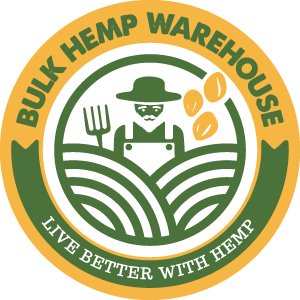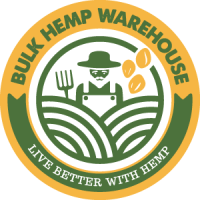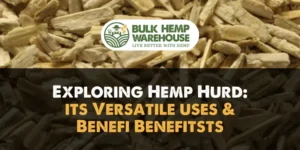
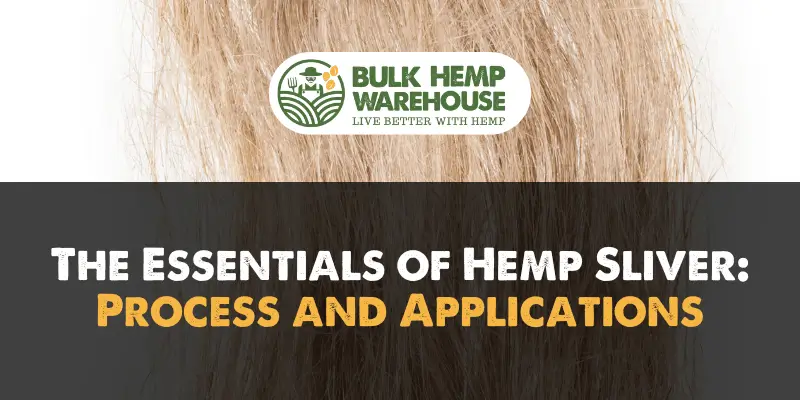
- Author Tyler Hoff
- Categories: Hemp Education, Hemp Fibers, Hemp Uses
The Essentials of Hemp Sliver: Process and Applications
Hemp Sliver secrets: a journey through time-tested processing methods
The hemp sliver stands out in the vast tapestry of textile materials for its durability and environmental friendliness.
Though overlooked by cotton and silk, this unique material has an unsurpassed sustainability and adaptability in natural fibers.
Human skill and reverence for nature are shown in turning rough hemp stalks into silky, lustrous yarn.
Hemp Sliver is such a neat material.
It almost reminds me a real hair, or horse hair. It’s such a cool material, and has been made for thousands of years, according to some historians.
The main purpose for hemp sliver is for making woven products such as hemp yarn, hemp twine, hemp rope, hemp fabric, hemp webbing as well as other non-woven application such as composites, plastics and reinforcement for building materials and craft projects.
We even have some customers that use hemp sliver for making bicycle frames to reinforce the joints.

What is Hemp Sliver, and How is it Produced?
Essentially, hemp sliver is the long bast, outer bark fiber of the hemp stalks.
Hemp sliver stands out in the vast tapestry of textile materials for its durability and environmental friendliness.
Though often overlooked by cotton and silk, this unique material has an unsurpassed sustainability and adaptability in natural fibers.
Human skill and reverence for nature are shown in turning rough hemp stalks into silky, lustrous yarn.
The Journey from Hemp Plant to Spinnable Fiber
The first step in hemp fiber processing is retting.
This traditional method involves controlled decaying of the hemp stalks to separate the fiber from the woody core.
Retting Hemp Fibers
Dew retting, where stalks are set out in fields to take advantage of morning dew and natural bacteria, and water retting, where stalks are submerged in water to break down pectin linking the fibers, are both retting methods.
Hemp slivers’ color, strength, and texture depend on the retting technique.
After retting, a change begins. Once stiff and unyielding, hemp stalks show long, golden fibers ready for the next stage.
There is also chemical retting using an enzyme process, as well as mechanical retting using machinery, otherwise known as “green decordication.”
Scutching Hemp Fibers
Breaking and scutching occur next.
Workers extricate valuable fibers from woody retted stalks by crushing and beating them mechanically.
It takes precision and intensity to liberate the fibers without harming them with each stroke.
This meticulous process yields clean, long hemp strands and shives or woody core remnants – otherwise known as hemp hurd fiber.
The hemp sliver process continues. The freed threads are rough and twisted.
Combing Hemp Fibers
Hackling, or hemp combing, begins. Workers carefully align the long hemp strands, eliminating the shorter and damaged ones with combs of various tooth fineness.
This technique straightens and cleans up the bast hemp fiber strands, creating the first actual stage of the hemp sliver.
It’s incredible: the wild tangle of fibers is suddenly calm, neat, and organized, a whisper of future textiles to come.
All of the fibers are now going in the same direction and resemble that hair-like structure I mentioned at the beginning of the post.
Spinning Hemp Sliver
At this point, the hemp sliver is ready for its ultimate transformation: spinning.
This delicate dance between man and machine draws and twists the sliver into yarn, almost completing the field-to-fabric process.
The spinner balances tension to give the yarn the correct strength and suppleness for weaving or knitting.
Hemp-to-sliver processing has been improved, adapted, and passed down through generations, preserving skill and sustainability.
However, as we examine each phase, we find a complex relationship between tradition and innovation.
Modern advances have made many procedures more efficient while still environmentally friendly.
The craft’s core remains a great respect for nature and a devotion to creating beautiful, sustainable materials.
The softer, finer sliver is reserved for high-end textiles, while the longer-quality, less refined sliver is used for making ropes, twine, and other non-woven applications.
Why Hemp Sliver is Considered a High-Quality Choice for Spinners
The tale of Hemp Sliver is a remarkable example of patience, respect, and harmony with nature in today’s fast-paced, throwaway civilization.
Each hemp sliver represents millennia of wisdom and the link between humanity and nature.
We wear history and a sign of a more sustainable and aware lifestyle when we wrap ourselves in a hemp outfit.
The hemp stalk-to-sliver process is a concept and lifestyle. It instills patience, sustainability, and simplicity.
The hemp sliver offers hope and reconnects us to nature in a world of synthetic materials and transient fashions.
Turning hemp into silver is complex and traditional, but it is worth it.
Each fiber has a roadmap for a more sustainable, conscientious lifestyle and textile possibilities.
Let the story of hemp sliver remind us of the beauty of tradition, the strength of simplicity, and the endless possibilities of aligning with the natural world as we explore and develop with natural fibers.
Comparing Hemp Fiber Sliver with Other Natural Fibers
The main distinction between hemp sliver and other natural fiber slivers is it’s strength durability and sustainability.
Compared to cotton, it’s not as soft, but far superior in strength.
Not to mention, cotton requires far more water, than hemp requires to grow.
And then of course you have the toxic petroleum and synthetic fibers that might be very strong and have hundreds of applications, but they are polluting our waterways, our bodies and ecosystems.
So hemp is a natural choice when it comes to supporting our environment and being kind to the health of the planet and ourselves.
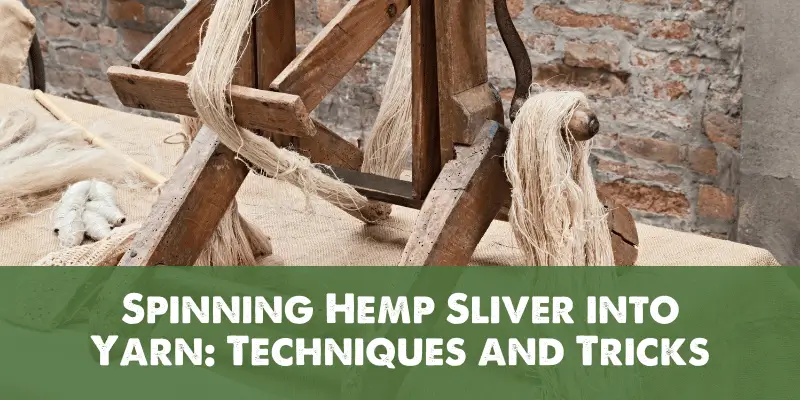
Spinning Hemp Sliver into Yarn: Techniques and Tricks
At this stage, this is where the hemp fabric comes to life. There are a few machines and tools used for spinning hemp yarns which we cover here.
Hand Spinning vs Machine Spinning: Which is Best for Hemp?
Determining which method of spinning is best for hemp—hand spinning or machine spinning—depends on several factors including the intended use of the yarn, production scale, desired yarn characteristics, and environmental considerations.
Both hand spinning and machine spinning have their unique advantages and limitations.
Here’s an overview:
Hand Spinning
Hand spinning is the process of turning fiber into yarn using tools like drop spindles or spinning wheels.
It is an ancient craft that can produce yarns with unique qualities.
Advantages of Hand Spinning Hemp Yarn:
- Customization: Hand spinning allows for greater control over the yarn’s thickness, twist, and texture, producing unique, artisan yarns.
- Sustainability: It uses less energy compared to machine spinning, making it more environmentally friendly in terms of energy consumption.
- Flexibility: You can spin small batches of yarn, making it ideal for custom or small-scale projects.
- Craftsmanship: Offers a personal touch and maintains the traditional craftsmanship aspect, potentially adding value to the final product.
Disadvantages of Hand Spinning Hemp Yarn:
- Time and Skill: It requires a significant amount of time and skill to produce yarn. Learning to spin effectively can take considerable practice.
- Consistency: Achieving consistent yarn thickness and strength can be challenging, especially for beginners.
- Volume: Not practical for large-scale production due to the time and labor involved.
Machine Spinning of Hemp Yarn
Machine spinning encompasses various mechanized processes for turning fiber into yarn, including ring spinning, rotor spinning, and more.
These techniques are used in industrial yarn production.
Advantages of Machine Spinning Hemp Yarn:
- Efficiency**: Machines can produce yarn much faster than human hands, making it suitable for large-scale production.
- Consistency**: Machines can produce yarns with consistent thickness, strength, and quality, important for commercial textiles.
- Versatility**: Modern spinning machines can handle a wide range of fibers and produce different types of yarns to meet specific requirements.
Disadvantages of Machine Spinning Hemp Yarn
- Cost: The initial investment for machinery can be high, making it less accessible for small producers or artisans.
- Energy Consumption: Higher energy requirement compared to hand spinning, which can have a larger environmental footprint.
- Less Customization: While machines offer versatility, there might be limitations in the ability to produce highly unique or artisan yarns.
For Hemp Specifically
Hemp fibers are known for their durability, strength, and natural resistance to mold and ultraviolet light. Both hand spinning and machine spinning can be used for hemp, but the choice depends on the end goal:
- Artisan or Specialty Products: If the goal is to produce niche, artisan products where unique characteristics and the handcrafted aspect are valued, hand spinning might be preferred.
- Commercial Production: For commercial textiles (clothing, industrial applications, etc.), where large quantities of consistent yarn are required, machine spinning would be the practical choice.
- Environmental Consideration: Hemp itself is a sustainable crop requiring less
Finding the Right Spin: Tips for Working with Hemp Fiber
Working with hemp fiber can be both ecologically rewarding and creatively fulfilling.
Hemp, renowned for its durability, sustainability, and versatility, has been used for millennia in textiles, but modern techniques and tools can make working with it easier and more productive.
Here are some practical tips for anyone looking to explore the potential of hemp fiber in their projects.
1. Understanding Hemp Fiber
Hemp fiber comes from the stalk of the Cannabis sativa plant.
It’s important to differentiate between the fibers: the long, strong outer fibers (bast fibers) are ideal for textiles, while the shorter inner fibers (hurd or shive) are more suited for non-woven items like paper or building materials.
2. Preparing the Fiber
Degumming
This is the process of removing the pectin, lignin, and other binding substances that hold the fibers together.
It can involve chemical, enzymatic, or water retting processes.
Proper degumming is crucial for softening the fibers and making them more manageable for spinning and weaving.
Carding
Carding combs through the fibers to detangle and align them.
This can be done using hand carders or a drum carder for larger quantities. Properly carded hemp is easier to spin and results in a smoother yarn.
3. Spinning
Starting with the Right Equipment
A longer staple length means hemp can be spun using a traditional spinning wheel or a drop spindle.
However, because of its somewhat coarse nature, using tools that allow for more tension control can make the process easier.
Moistening Fibers
Hemp fibers can be stiff, so lightly misting them with water or using a humidifier in your workspace can make the fibers more pliable and easier to work with
Tweaking the Twist
Hemp fibers work well with a high twist to maintain strength in the yarn.
Experiment to find the right balance for your project, as too much twist can make the yarn hard while too little can lead to it falling apart.
4. Blending
Mixing hemp with other fibers can enhance its characteristics.
For instance, blending with wool can provide more elasticity, while mixing with cotton can offer a softer finish.
Typically, a 50/50 blend is a good starting point, but feel free to experiment with different ratios.
5. Dyeing
Hemp dyes beautifully and can hold rich colors.
Natural dyes and fiber-reactive dyes both work well, but pre-treating with a mordant can help achieve deeper colors.
Always test on a small sample to ensure the desired outcome.
6. Finishing
Softening Fabric
Newly woven or knitted hemp fabric can feel stiff.
Softening it involves washing and using fabric softeners or simply handling and wearing the item over time.
Blocking
Like with other fibers, blocking can help shape and set your finished hemp project. Use pins to stretch
Blending Hemp with Other Fibers: Wool, Linen, and More
The great thing about hemp is how easy it is to blend with other natural, and even synthetic fibers.
What makes hemp so great when blending, is that you can benefit from the strength, durability and sustainability aspects of while, while also benefiting from the features of the other fibers you’re working with.
So for example when blending with organic cotton, you’re getting the benefit of the soft gentle feel of the cotton, but boosting the strength and longevity of the fabric with the hemp.
One of the specialty fabrics that we offer here at Bulk Hemp Warehouse is a hemp silk blend, which many of our customer just love working with.
It’s great for dresses, pillow cases, formal attire and other cool things.
Another great thing about blending hemp fibers with other natural fibers is that you can keep the cost down of the fabric, which allows for more people to get access to hemp.
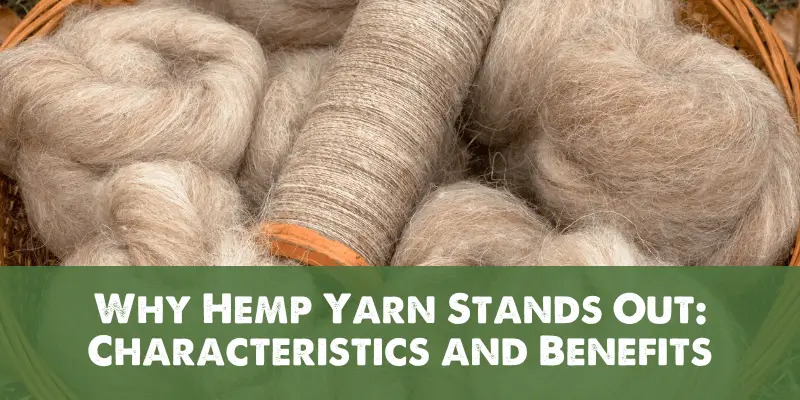
Why Hemp Yarn Stands Out: Characteristics and Benefits
Revival and creativity characterize hemp slivers in homeware and apparel.
It connects the past and future, proving natural fibers’ attractiveness in a synthetic environment.
By wearing hemp, we support a movement that values sustainability, health, and nature’s beauty.
In the vast array of materials, hemp silver stands out for its history, utility, and environmental care.
A finely woven tablecloth, stylish coat, or artisanal purse shows hemp’s modest elegance and gentle impact on the world.
Hemp in homeware and fashion is more than a trend; it reflects our growing quest for authenticity and sustainability in all aspects of life.
As we discover and enjoy hemp silver’s uses, we honor our past and create a more sustainable and conscientious future.
The story of Hemp Sliver is about a shift of perspective, a reevaluation of what we value in our surroundings and apparel.
It calls for a return to the natural and permanent in an age of the transient and artificial.
Eco-Friendly and Biodegradable Qualities of Hemp Yarn
Eco-Friendly and Biodegradable Qualities of Hemp Yarn Hemp yarn is increasingly recognized for its eco-friendly and biodegradable qualities, which set it apart as a sustainable choice in the textile industry.
Derived from the Cannabis sativa plant, this fiber has been used for millennia, but its advantages are becoming more pertinent in the face of environmental concerns.
Here are several key features that highlight the eco-friendly and biodegradable attributes of hemp yarn:
1. Low Environmental Impact
Hemp cultivation requires significantly less water compared to cotton, another common textile crop.
Hemp can grow in a variety of climates and soil types, often without the need for irrigation.
This low water usage makes it a more sustainable alternative, reducing the strain on water resources.
2. No Need for Pesticides or Herbicides
The hemp plant is naturally resistant to pests and diseases, which means it can be grown without the use of harmful pesticides and herbicides.
This not only ensures that the yarn produced is more eco-friendly but also contributes to healthier soil and ecosystems by avoiding chemical runoff.
3. Carbon Sequestration
Hemp plants are excellent at absorbing carbon dioxide from the atmosphere, acting as a carbon sink.
Through the process of photosynthesis, hemp converts more CO2 into oxygen, helping to reduce greenhouse gas emissions.
The fast growth rate of hemp amplifies its effectiveness as a carbon-absorbing crop.
4. Biodegradability
Hemp yarn is 100% biodegradable, meaning it can decompose naturally without leaving toxic residue.
When a hemp textile product reaches the end of its life, it can be composted, turning back into soil and providing nutrients for future plant growth.
This contrasts sharply with synthetic fibers, which can take hundreds of years to break down and often release microplastics into the environment.
5. Soil Health
Hemp cultivation can improve soil health through phytoremediation, a process where the hemp plants can absorb toxins and heavy metals from the soil, effectively cleaning it.
This regenerative property makes hemp an ideal crop for rotation, keeping the land usable for longer periods.
6. Sustainable Farming Practices
The farming of hemp encourages sustainable agriculture practices.
Since it requires minimal input in terms of water, pesticides, and herbicides, it fits well within organic and sustainable farming models.
This promotes biodiversity and supports the ecosystem.
7. Versatility and Efficiency
Hemp can be used to produce a wide range of products from the same crop, including textiles, paper, building materials, and more.
This efficiency ensures that very little is wasted, further enhancing its sustainability profile.
In conclusion, hemp yarn stands out as an eco-friendly and biodegradable textile option that can significantly contribute to sustainable development in the fashion and textile industries.
Its low environmental impact, combined with its beneficial crop characteristics, makes it a valuable resource for addressing some of the critical environmental challenges faced by the textile sector today.
Durable, Yet Soft: The Unique Texture of Spun Hemp
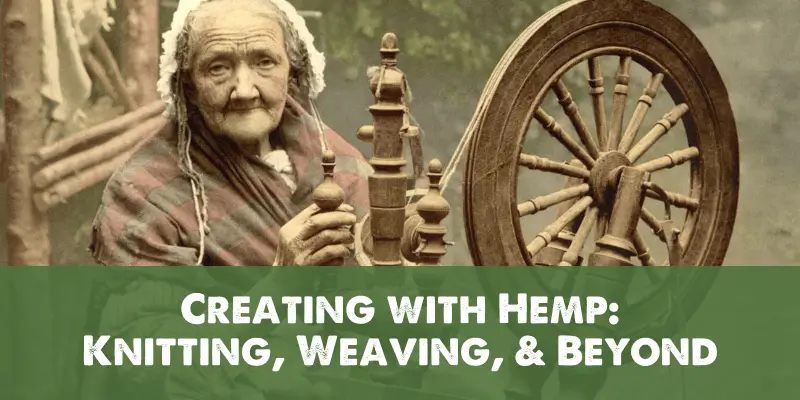
Creating with Hemp: Knitting, Weaving, and Beyond
Knitting with Hemp Yarn: Patterns and Possibilities Weaving Techniques Suitable for Hemp Fiber
In the broad and lively world of textiles, hemp sliver symbolizes the union of heritage and modernity, sustainability and style.
This versatile, eco-friendly fiber derived from hemp stalks has made a spectacular journey from the fields to the homeware and fashion industries.
The ancient method of turning hemp into a sliver has allowed it to be used in our homes and closets for comfort, durability, and a touch of nature’s charm.
Hemp sliver is used in homeware to make functional and attractive goods.
Imagine hemp-made table runners, throw blankets, and window treatments with rustic elegance, softness, and simplicity.
These artifacts add warmth and earthiness to a space, reminding it of its organic beginnings.
Hemp’s insect, mildew, and UV resistance make it perfect for home textiles, delivering longevity and ease of upkeep.
Beyond its beauty and practical qualities, hemp sliver provides eco-consciousness to homeware.
In a time when sustainable living is emphasized, buying hemp-based home items shows our environmental devotion.
Cushions, carpets, and other products that use less water, chemicals, and biodegradable materials match our homes with green living.
Innovative Hemp Fabric and Textile Applications
In fashion, hemp silver defies trends, presenting a modern and historic quality.
Due to its dye and finish versatility, it can be earthy and organic or bold and striking. Its breathable and hypoallergenic properties make hemp fabric popular among people seeking comfort and style.
As consumers become more sensitive to their clothing choices, hemp meets the need for ethical and eco-friendly fashion.
The combination of hemp silver and technology has created novel apparel textures, mixes, and uses.
Fashion designers challenge hemp clothes stereotypes by mixing traditional weaving techniques with modern design.
These designs demonstrate hemp’s adaptability and promise to revolutionize sustainable fashion.
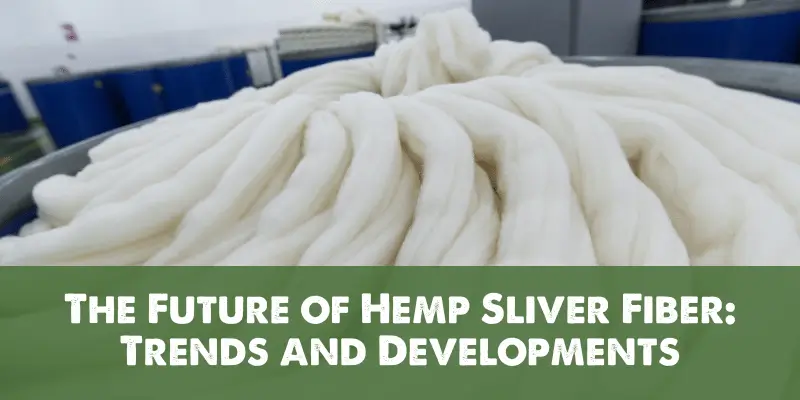
The Future of Hemp Sliver Fiber: Trends and Developments
Emerging Trends in Hemp Fiber Applications
There are so many amazing people working with hemp fibers, and new groups and old, that are experimenting with different applications.
I’m not sure how quickly hemp sliver will be produced here in the USA, because of how much more cost effective it is to produce over seas, but there are groups that are really wanting to see this – so you never, know it could happen.
Sustainability and the Role of Hemp in Eco-Friendly Fashion
Companies like Patagonia, Adidas, and some smaller companies like Jungmaven and Prana are all innovating and using hemp in their fashion and designs.
It’s exciting to see more companies wanting to go green, and be more sustainable with their clothing, because more and more consumers are demanding it.
So one of the best things you can do is support these brands and buy hemp-based clothing, not only to help make it easier for others to get hemp products, but to encourage these brands that they are doing the right thing.
New Technologies in Hemp Fiber Processing and Production
There are some new and more efficient ways of processing hemp stalks for their long bast fibers that should bring the cost down, and increase production capacities.
In fact one of our strategic partners is working on a green decordication method that could really be (to put it colloquially) a game-changer.
This method of processing will allow farmers to processing the stalk right on their land, and increase the profitability of their harvest, because they won’t have to invest is as much processing equipment.
More on that to come soon!

Where to Buy Hemp Sliver
Naturally, we would love to provide you with our high-quality sustainable hemp sliver fiber products which you can find here on our site; but if you have any questions, or need larger volumes we are happy to work with you on your needs.
Keep up the great work and let us know what you’re doing with hemp sliver!
OTHER EDUCATIONAL HEMP POSTS
Explore Other Posts by Bulk Hemp Warehouse

Why Hemp Seeds Are the Ultimate Superfood for Birds – And Why Corn, Wheat, and Soy Don’t Belong in Their Diet
Could hemp seeds be the NEW Bird Feed that beats corn wheat and soy? I think so.

How China Grows and Processes Hemp Fiber – From an American Farmer
Steve Groff, a third-generation farmer from Southeastern Pennsylvania, recently embarked on a transformative journey to China, a trip that has profoundly impacted his perspective on the future of hemp farming and textile production. This wasn’t a casual tourist visit; it

10 Ways to Use Hemp for the Holidays
The holiday season is a time for creativity, warmth, and celebration. Hemp, with its versatility and sustainable nature, offers endless opportunities to make your holiday festivities more eco-friendly and unique. Whether you’re looking for gift ideas, decorations, or a way







